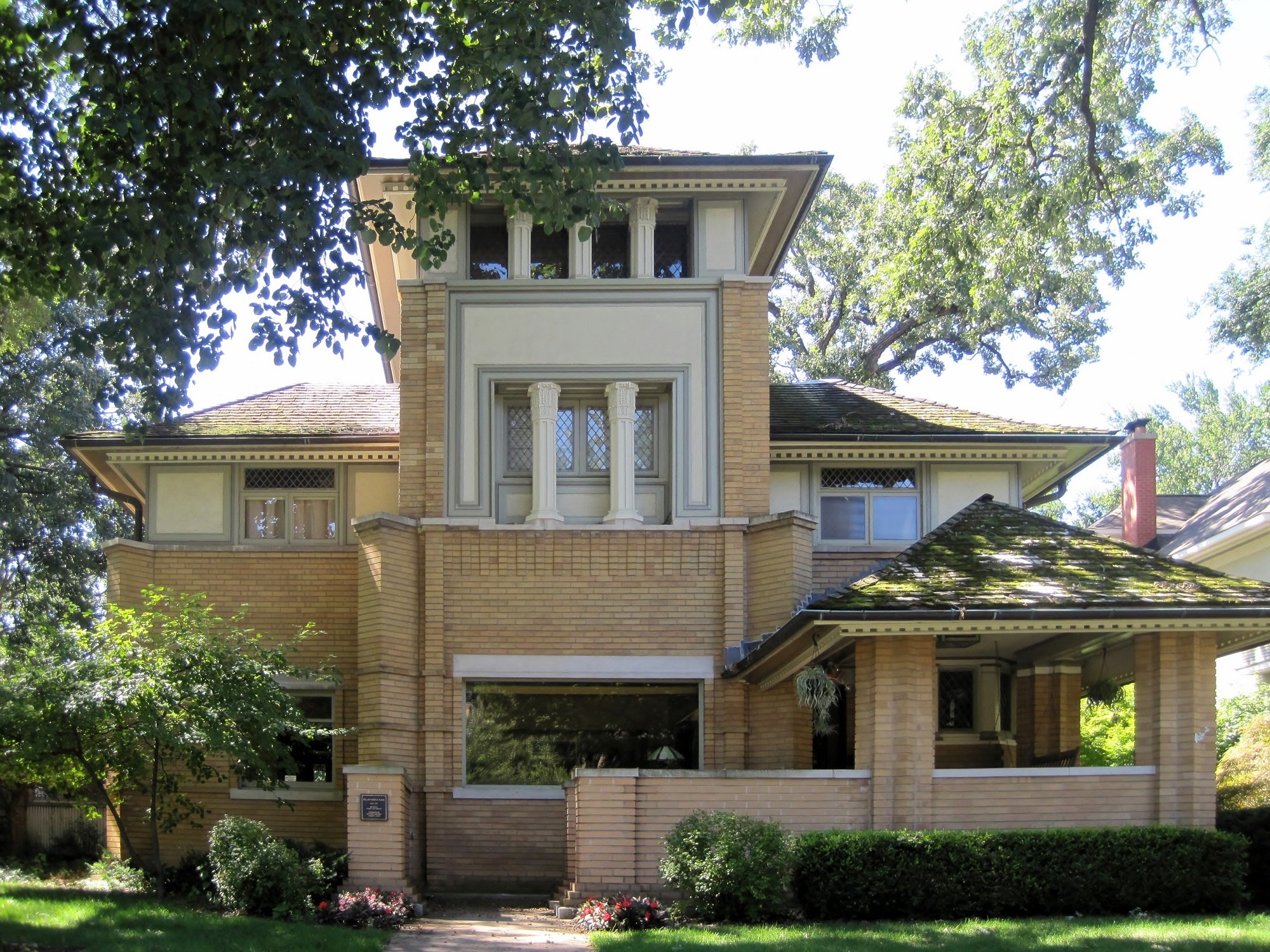#12021. Classic Prairie Style Facade: Horizontal Lines and Brick Warmth

The building shown in the image is a striking example of Prairie Style architecture, developed by Frank Lloyd Wright in the early 20th century. The facade demonstrates characteristic features of this style: horizontal composition, wide roof overhangs, low proportions, and an organic connection with the surrounding landscape.
The main material of the facade is yellow brick, which creates a warm, natural tone for the entire composition. The central part of the building is highlighted by a vertical element with columns, adding dynamics to the overall horizontal arrangement. The second-floor windows form a continuous band, emphasizing the horizontality of the structure, while decorative friezes under the cornices enhance this effect.
Of particular note is the carefully crafted detailing: classical columns with capitals on the central facade contrast with the geometric forms of the main volume, creating an interesting stylistic tension. The porch with massive brick supports is organically integrated into the overall composition, while the diamond-patterned ornament on the windows adds sophistication.
When designing your own facade, several techniques can be borrowed: the use of horizontal lines to visually widen the building, combination of natural materials such as brick and wood, integration of terraces and porches into the overall volume, and the application of decorative elements to create rhythm. A particularly effective technique is highlighting the central part of the building with a vertical accent, as demonstrated in this example.